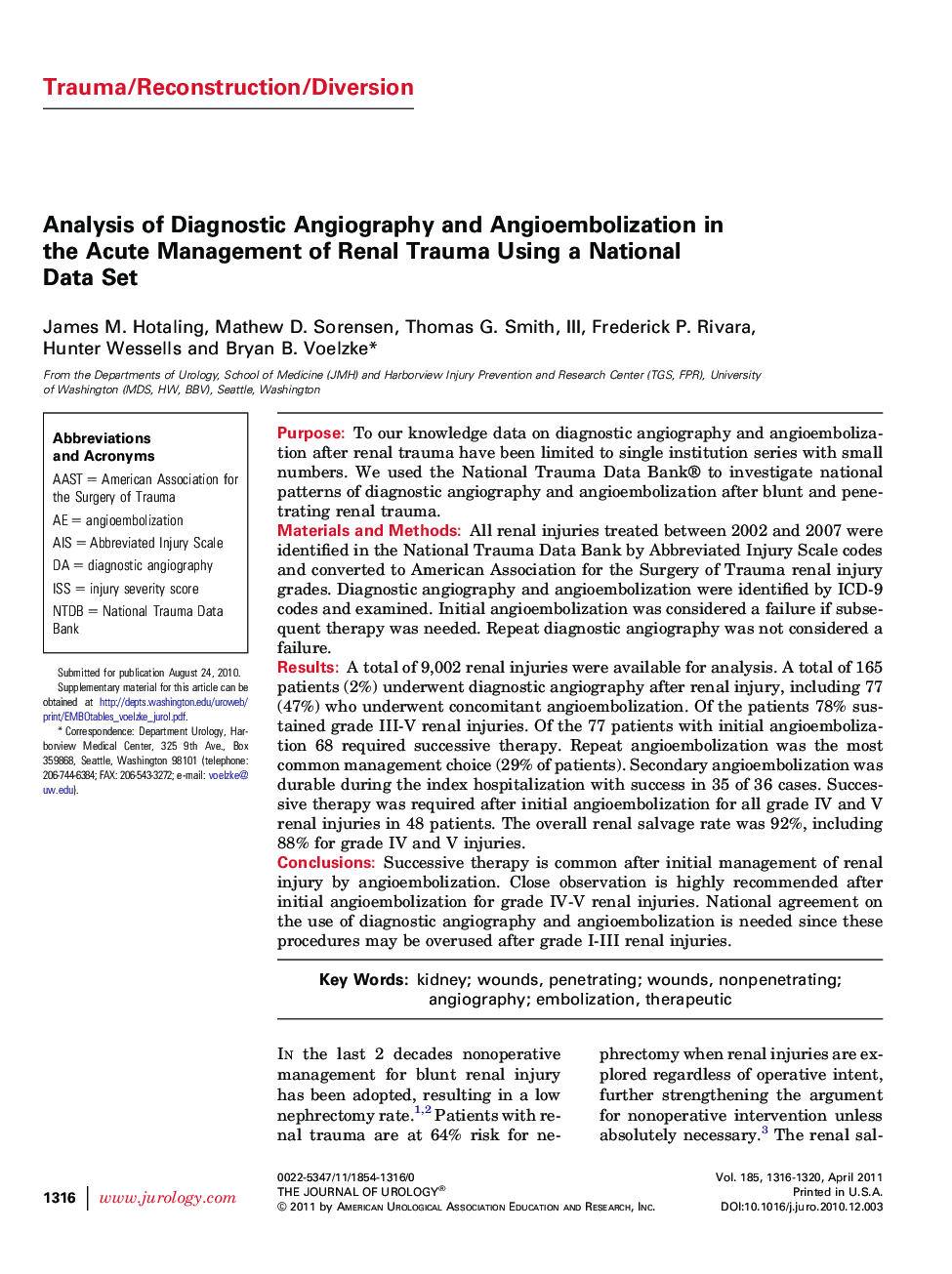| کد مقاله | کد نشریه | سال انتشار | مقاله انگلیسی | نسخه تمام متن |
|---|---|---|---|---|
| 3870685 | 1598951 | 2011 | 5 صفحه PDF | دانلود رایگان |

PurposeTo our knowledge data on diagnostic angiography and angioembolization after renal trauma have been limited to single institution series with small numbers. We used the National Trauma Data Bank® to investigate national patterns of diagnostic angiography and angioembolization after blunt and penetrating renal trauma.Materials and MethodsAll renal injuries treated between 2002 and 2007 were identified in the National Trauma Data Bank by Abbreviated Injury Scale codes and converted to American Association for the Surgery of Trauma renal injury grades. Diagnostic angiography and angioembolization were identified by ICD-9 codes and examined. Initial angioembolization was considered a failure if subsequent therapy was needed. Repeat diagnostic angiography was not considered a failure.ResultsA total of 9,002 renal injuries were available for analysis. A total of 165 patients (2%) underwent diagnostic angiography after renal injury, including 77 (47%) who underwent concomitant angioembolization. Of the patients 78% sustained grade III-V renal injuries. Of the 77 patients with initial angioembolization 68 required successive therapy. Repeat angioembolization was the most common management choice (29% of patients). Secondary angioembolization was durable during the index hospitalization with success in 35 of 36 cases. Successive therapy was required after initial angioembolization for all grade IV and V renal injuries in 48 patients. The overall renal salvage rate was 92%, including 88% for grade IV and V injuries.ConclusionsSuccessive therapy is common after initial management of renal injury by angioembolization. Close observation is highly recommended after initial angioembolization for grade IV-V renal injuries. National agreement on the use of diagnostic angiography and angioembolization is needed since these procedures may be overused after grade I-III renal injuries.
Journal: The Journal of Urology - Volume 185, Issue 4, April 2011, Pages 1316–1320